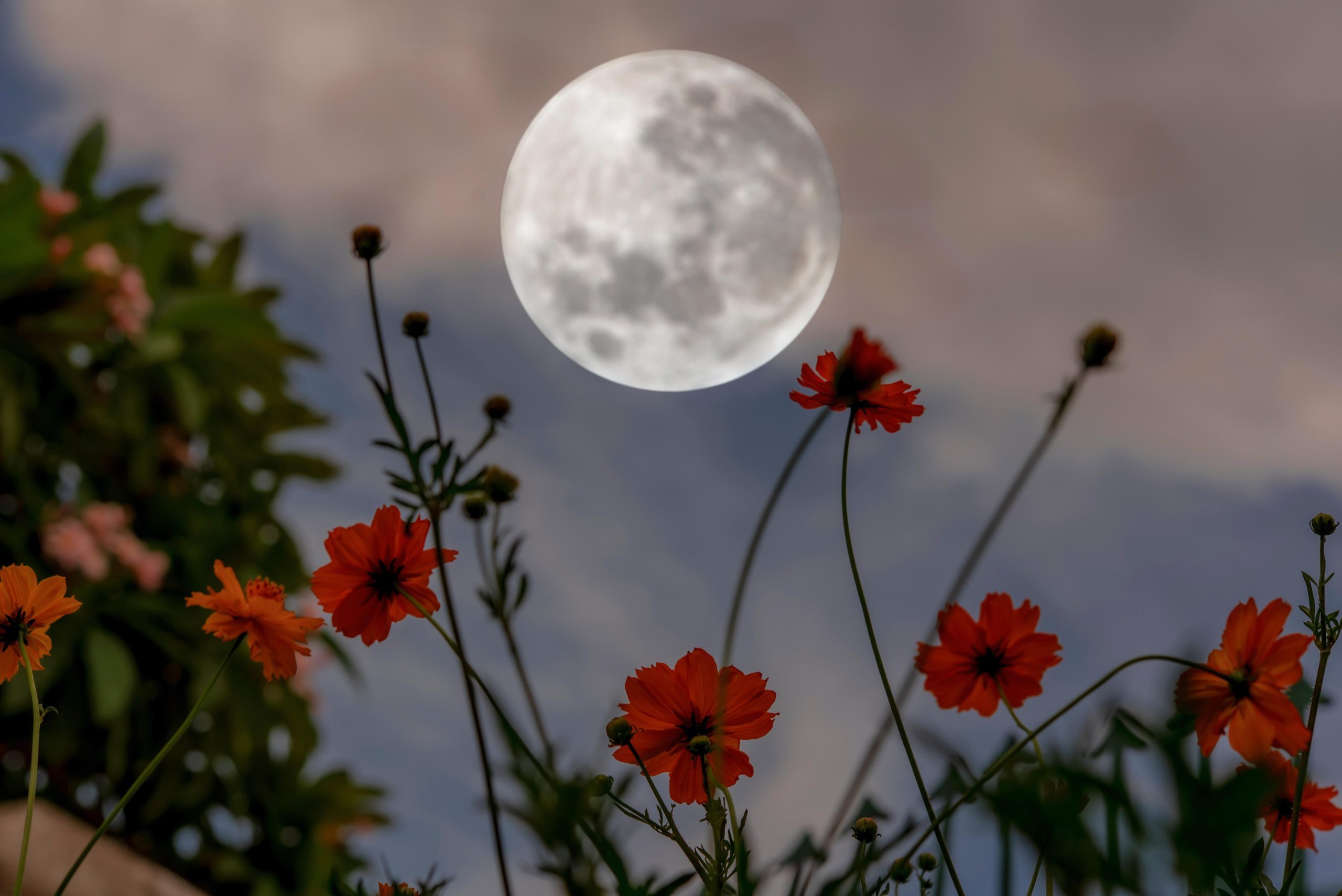Connect with your ancestors and Mother Nature when you garden by the phases of the moon. Apply lunar gardening principles for a healthier garden.

Gardening By the Moon: How To Use Lunar Phases for Planting and Harvesting

As a master gardener and herbalist, I work with nature in my gardening practices. I don’t use chemicals. I follow permaculture principles. And I aim to be in harmony with Mother Nature as much as possible.
Lunar gardening, or gardening by the moon, is another nature-based technique I incorporate. It’s an ancient and fascinating concept, centered around the idea that the distinct energy of each phase of the moon aligns with specific garden tasks and plants.
I know it sounds witchy and magical. But there’s legitimate science behind it, and I know many people who swear by this technique to generate healthier plants and bigger harvests.
On This Page
What Is Gardening by the Moon?
In simple terms, it’s synchronizing gardening activities with the different phases of the lunar cycle.
We know the moon’s gravitational pull influences the tides in our oceans. But it also significant impacts smaller bodies of water, including the moisture content in the soil and within the plants themselves. In that way it influences the growth patterns, health and vigor of plants.
The moon’s cycle features four primary phases: the new moon, the first quarter or waxing moon, the full moon, and the last quarter or waning moon. In lunar gardening, each phase is better for certain types of gardening activities.
Case in point: Because the moon’s gravitational pull is strongest during a new moon, its energy stimulates root growth. So it’s best to plant seeds and transplant seedlings and young plants during the new moon to encourage strong, vigorous root growth. On the other hand, the full moon phase boosts plant moisture content, making it best for harvesting.
Lunar gardening also accounts for the moon’s passage through the twelve constellations of the zodiac, each associated with an element of earth, fire, air or water. These elements are believed to influence different types of plants and their growth patterns.
Really, it comes down to this: Gardening by the moon encourages gardeners to be more mindful and observant of the natural world around them, fostering a deeper connection between the gardener, their plants and the celestial bodies above.
What Is the Origin and History of Gardening By the Moon?
The roots of lunar gardening trace back to ancient civilizations, including the Romans, Egyptians, Mayans and even the Celts. All observed the moon’s phases to guide their agricultural practices.
Some of these civilizations left detailed agricultural almanacs, in particular the Mayans, renowned for their advanced astronomical knowledge. Their agricultural records include information on the lunar phases and celestial events that guided their farming efforts.
The practice persisted through time. The Old Farmer’s Almanac, the oldest one in America, has been providing lunar gardening information to its readership since 1792.
Farming communities the world over still practice lunar agriculture. Home gardeners interested in working with the natural world instead of fighting it are turning to lunar gardening with great success.
Gardening by the Moon Benefits
Lunar gardening offers several advantages over traditional gardening:
- Improved plant growth: Aligning planting with the moon’s phases can lead to healthier, faster-growing plants.
- Enhanced moisture retention: The moon’s gravitational pull can improve soil moisture, beneficial for seed germination.
- Better pest control: Some gardeners observe fewer pests and diseases when following lunar gardening principles.
- Better weed control: Removing weeds between the waning moon and the new moon, when plant growth is slowest, makes weeds less likely to come back. My grandfather always swore by weeding when the moon was in Leo.
There really aren’t any drawbacks to lunar gardening. It doesn’t hurt you or your garden, or require any special preparation or tools. And it isn’t any more labor-intensive than regular gardening.
Planting by the Lunar Phases
Each lunar phase offers unique energy for different planting activities:
- New moon planting: Ideal for sowing seeds and planting above-ground crops.
- Waxing moon planting: Great for foliar growth and development, especially for leafy plants and vegetables.
- Full moon planting: Perfect for planting root crops and bulbs.
- Waning moon planting: A good time for pruning, weeding and harvesting.
Harvesting by the Lunar Phases
As with planting, each lunar phase offers optimal times for harvesting:
- Waxing moon harvesting: Ideal for picking leafy greens and herbs for immediate use.
- Full moon harvesting: Perfect for root vegetables and fruits.
- Waning moon harvesting: Best for crops for storage.
- New moon harvesting: Generally a rest period, but can be used for harvesting if necessary.
Moon Gardening Tips and Techniques
To start with lunar gardening, consider these tips:
- Utilize lunar calendars and planning tools: Use a lunar calendar to track the moon’s phases and plan your gardening activities accordingly.
- Observing lunar phases and moon signs: Learn to observe the moon’s phases and signs in your local sky.
- Employ complementary practices: Combine lunar gardening with other organic and biodynamic practices for best results. Biodynamic gardening is a holistic, regenerative, natural approach to improving the health of the soil, plants, animals and people that live and work in that space. Focus on building soil health, following permaculture principles and trying new ways of working with nature, like composting in place or building a hugelkultur bed.


















